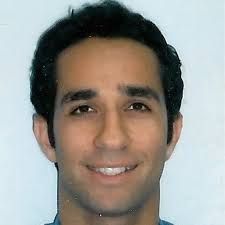Article
SRF Patterns Identified in Age-Related Macular Degeneration
Author(s):
More than half of the eyes observed in the study displayed collapse of the associated druse or drusenoid PED.
Assaf Hilely, MD

Distinct patterns of subretinal fluid (SRF) could be useful in treating patients with age-related macular degeneration (AMD).
A team, led by Assaf Hilely, Division of Ophthalmology, Tel Aviv Ichilov-Sourasky Medical Center, evaluated the various patterns of subretinal fluid in eyes with age-related macular degeneration (AMD) in the absence of macular neovascularization (MNV), while assessing the long-term outcomes in these eyes.
In the retrospective study, the investigators examined eyes with non-neovascular AMD and associated SRF and excluded eyes with evidence of MNV. The research team obtained spectral-domain optical coherence tomography (SD-OCT) at baseline and at follow-up.
The researchers also analyzed qualitative and quantitative SD-OCT of macular drusen including drusenoid pigment epithelial detachment (PED) and associated SRF to determine anatomic outcomes. Overall, the investigators examined 45 eyes with a mean duration of follow-up of 49.7±36.7 months.
The investigators found 3 different morphologies of subretinal fluid—crest of fluid over the apex of the drusenoid PED, pocket of fluid at the angle of a large druse or in the crypt of confluent drusen or drape of low-lying fluid over confluent drusen. More than half (n = 27) of the 45 eyes with fluid displayed collapse of the associated druse or drusenoid PED, while 24 eyes developed evidence of complete or incomplete retinal pigment epithelial and outer retinal atrophy.
Recently, investigators found a number of outcomes for patients with neovascular age-related macular degeneration (nAMD) are directly related to the retinal thickness variations following the initiating of anti-vascular endothelial growth factor (anti-VEGF) treatment.
When initiating anti-VEGF treatment for patients with nAMD, prognostic factors often guide specific treatments. It is believed that eyes with greater fluctuation in retinal thickness over time have worse outcomes than eyes with less variation.
After the investigators adjusted for baseline BCVA and trial allocations, BCVA worsened significantly across the quartiles of FCPT standard deviation.
Overall, the difference between the first and fourth quartiles was -6.27 Early Treatment Diabetic Retinopathy Study letters (95% CI, -8.45 to -4.09).
They also found the risk of developing fibrosis and macular atrophy increased across FCPT SD quartiles.
The odds ratios ranged from 1.40 (95% CI, 1.03-1.91) for quartile 2 to 1.95 (95% CI, 1.42-2.68) for quartile 4 for fibrosis. The OR also ranged from 1.32 (95% CI, 0.90-1.92) for quartile 2 to 2.10 (95% CI, 1.45-3.05) for quartile 4 for macular atrophy.
While retinal thickness variation is important, as is discovering the SRF patterns in eyes with age-related macular degeneration.
“Non-neovascular AMD with SRF is an important clinical entity to recognize to avoid unnecessary anti-vascular endothelial growth factor therapy,” the authors wrote. “Clinicians should be aware that SRF can be associated with drusen or drusenoid PED in the absence of MNV and may be the result of retinal pigment epithelial (RPE) decompensation and RPE pump failure.”
The study, “Non-neovascular age-related macular degeneration with subretinal fluid,” was published online in the British Journal of Ophthalmology.
2 Commerce Drive
Cranbury, NJ 08512
All rights reserved.





